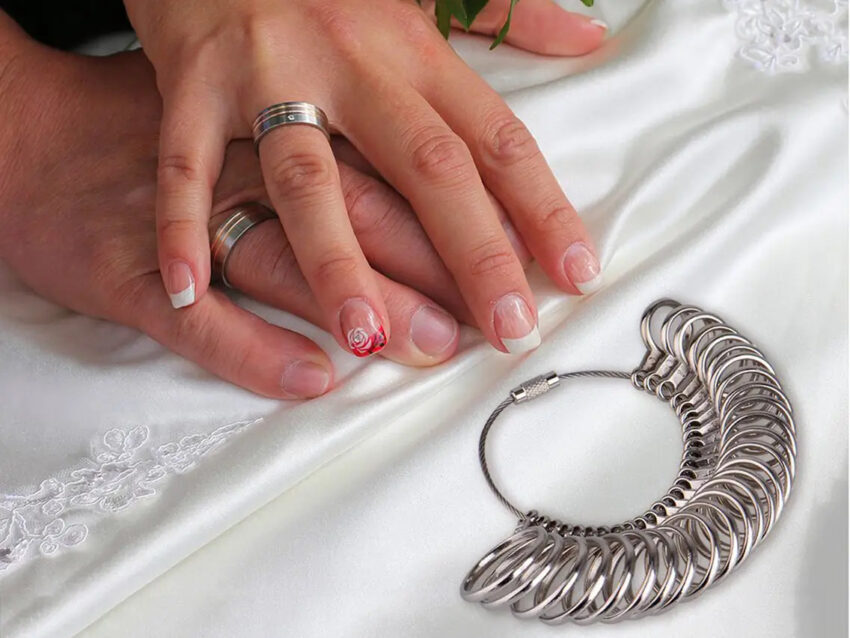Congratulations! You’ve found the one, and now you’re ready to pop the question. The very first thing you’ll want to do is make sure your engagement ring is covered by insurance. In this guide, we’ll show you how to protect your investment with an engagement ring policy. This article is created by https://dress24h.com/
Determine Your Ring’s Worth

The first step in insuring your ring is to determine its worth. This can be done by consulting a jeweler or by looking at similar rings online, which will give you an idea of what the ring would sell for if you were to sell it.
You also need to decide how much money you want your policy to cover in case of theft or loss. Most policies have maximum limits (usually around 1 million dollars), so make sure that whatever amount of money makes sense for your situation falls within this limit before moving forward with purchasing a policy.
If possible, try not relying solely on receipts when determining how much insurance will cost–it’s always better if there are other ways for potential buyers and insurers alike verify that this piece really belongs to them! Discover the state farm engagement ring insurance.
Find Out Your Personal Insurance Carrier
First, you’ll need to find out who your personal insurance carrier is. You can do this by asking your insurance agent or checking your insurance card (if you have one). If neither of those options works for you, call up the company and ask them directly–they should be able to tell you which company they work with. Finally, if all else fails and none of these options are available to you, try searching online for “insurance companies near me.
Create an Inventory of Your Jewelry
It’s a good idea to create an inventory of your jewelry. This can be done by taking photos of each piece and writing down their value, or by physically securing all of your jewelry in one place so that you can see it all at once. As you do this, keep in mind that some pieces may have sentimental value beyond their monetary worth–for example, if someone gave you a necklace for your birthday, its monetary value might not be very high but it still holds sentimental value for you.
You’ll also want to keep track of any receipts or documentation about when and where items were purchased (or borrowed). This will come in handy if there is ever any question about whether an item was lost due to theft or accidental damage versus simple wear-and-tear over time!
Choose a Coverage Amount and Duration
When choosing a coverage amount and duration, it’s important to consider the value of your ring. If you’re insuring an engagement ring or wedding band that costs hundreds or thousands of dollars, then you’ll want to make sure that whatever insurance policy you choose will provide enough protection in case of loss or theft.
On the other hand if your ring is worth less than $1,000 (and even if it isn’t), then investing in additional coverage might not be necessary–especially if there are other items with higher values that need protecting as well. You may also want to consider how long you plan on keeping this piece around before making any purchases like this again because some insurers only offer short-term policies rather than long-term ones like life insurance policies do; this could mean having multiple policies over time if one isn’t enough!
Review Your Policy Terms and Conditions
Before you start shopping for a policy, it’s important to make sure that your current ring is covered under the terms of your current policy. If not, then you may want to consider getting a new one to ensure full coverage of both the engagement ring and wedding bands.
- Check for limitations on coverage: Some insurers might have restrictions on how much they will pay out if they need to replace an item due to theft or loss (for example). Others may require a deductible before paying anything out at all–and these can vary widely depending on what type of jewelry we’re talking about here!
- Make sure you understand what is covered: Many policies include certain things but leave others out entirely; for example, some policies don’t cover gemstones unless those gemstones are set into another piece of jewelry (like earrings), while others exclude certain kinds altogether (such as diamonds). Other common exclusions include damage caused by fire or water damage (which usually means floods!)
Conclusion
In conclusion, we hope that this article has helped you understand the ins and outs of purchasing an engagement ring insurance policy. While it may seem like a complicated process at first glance, we believe that with a little bit of research and planning, anyone can ensure their investment is protected against loss or damage.
